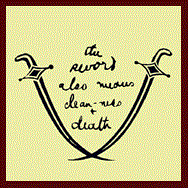Acknowledgements
Notes and abbreviations

Home
Introduction
In 1920 W T Massey, official correspondent of the London newspapers with the Egyptian Expeditionary Force, noted 'The story of the Arab army has not been written, and I doubt if any one could write it except Colonel Lawrence. Certainly no other British officer knows so much about it, and probably a great deal will remain secret, but if he would tell the world something of the Arab army's operations, and could be persuaded not to efface himself, we should have one of the most fascinating books on the war.' (1)
It was to be a further six years before that hoped-for book appeared, but even then it was not available for all to read. T E Lawrence, his self-despised heroic image by now thinly disguised under the name of T E Shaw, had spent much of his time during those intervening years in the writing and re-writing of a manuscript which in 1926 he produced in a sumptuously decorated and illustrated privately printed edition of only some 200 copies.
So much has been written of Lawrence. Tales of derring-do beneath the hot sun of Arabia captured the imagination of a British public repelled by the reality of the mud-filled trenches on the Somme and eager to romanticise this more exotic theatre of war - and its players. Lawrence's actions, motives and writings have been subjected to an infinite degree of critical analysis, with biographers and reviewers alike enthusiastically dipping their pens into everything from whitewash to the blackest tar. Only in recent years has a more balanced approach seemed possible, aided of course by a more rational climate of opinion in which our heroes need no longer be hailed as saints, either to be worshipped or cast down as false idols, and there is a more ready acceptance of their feet of clay.
The aim of the present work is to recount the history of Lawrence's Seven Pillars of Wisdom, and more particularly to examine, in considerable and sometimes over-pedantic detail, the minutiae of the book's more extraordinary visual aspects - for while they have argued about the man, this great work of book production, to which he obsessively devoted so much time and energy, has generally received scant attention, totally disproportionate to the supreme effort put into it.
Lawrence professed a desire to write an 'English fourth' to rank with three volumes on his 'shelf of "Titanic" books' - Herman Melville's Moby Dick, Friedrich Nietzsche's Thus Spake Zarathustra and The Brothers Karamazov of Dostoevsky (2) - and in this literary goal he succeeded. He also sought to realise his own ideals of printing perfection - to become a latter-day William Morris - and for all the book's many eccentricities and oddities, or perhaps because of them, and despite his own disillusioned verdict on the years of toil, that his experience was 'almost a conclusive demonstration that publishing is not a suitable hobby for an airman' (3), Lawrence's subscribers' edition of Seven Pillars of Wisdom, in its physical achievement, is manifestly one of the most remarkable books published in the 20th century.
1 Allenby's Final Triumph, W T Massey, Constable, 1920, p 272 2 L 164, Edward Garnett, 26.VIII.22 3 Letter to Francis Rodd, quoted by John E Mack, A Prince of our Disorder, Weidenfeld & Nicolson, 1976, p 360